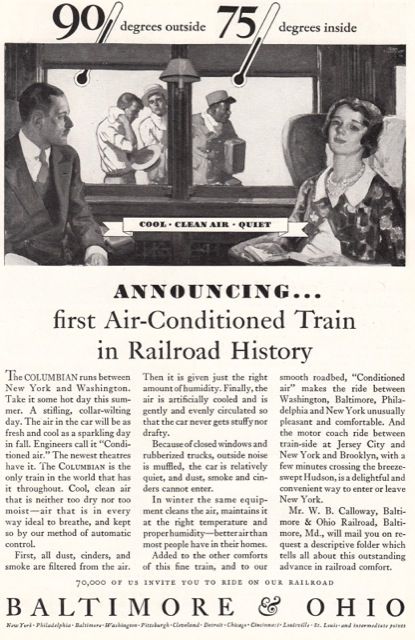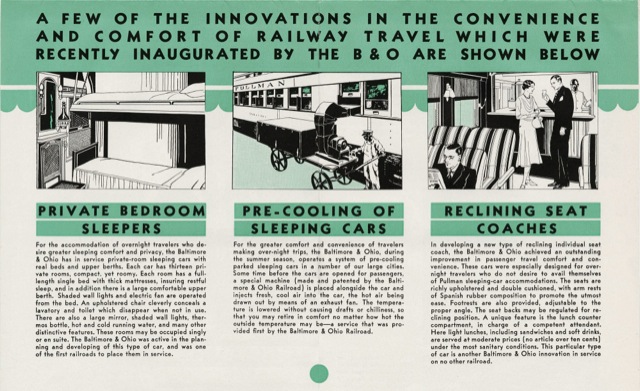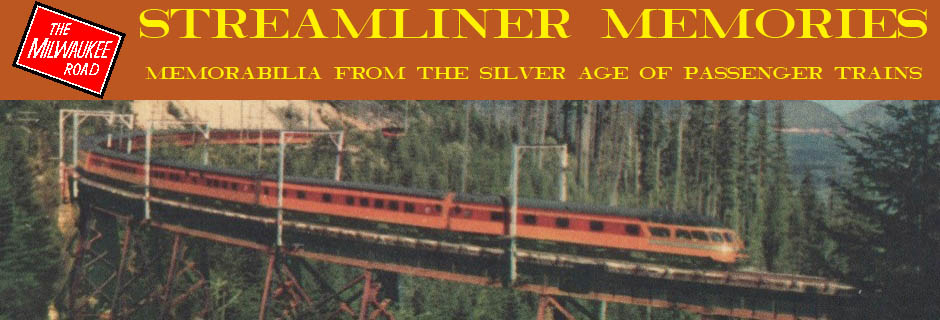Today is the first anniversary of this blog. To date, I’ve posted nearly 500 PDFs of various streamliner memorabilia, including more than 100 for the Great Northern, 80 for the Union Pacific, nearly 80 for the Burlington (including the California Zephyr), 45 Santa Fe, 38 Southern Pacific, 28 Northern Pacific, 19 Rock Island, 15 Canadian Pacific, about 35 from various eastern and southern railroads, and about a dozen from General Motors or other manufacturers. This doesn’t count various ads, postcards, and other items found on the web and posted mostly as JPGs rather than PDFs.

Click image for a larger view.
I have lots more streamliner memorabilia to post, but today I’m going to start posting some pre-streamliner memorabilia. When we think of streamliners, we often think of Diesel-powered, stainless steel trains. But the Milwaukee Road proved that streamlined steam locomotives could pull trains just as fast (and attract as many passengers) as Diesel locomotives; and the majority of streamlined trains were made of Cor-Ten steel, not stainless steel.
The one technology that was absolutely essential for fast, streamlined trains was air conditioning. Prior to air conditioning, the only way to cool trains in the summer was to open the windows. That might be satisfactory in trains going 35 or 45 miles per hour, but in trains going 80, 90, or more than 100 miles per hour open windows would be uncomfortable if not dangerous to passengers.
Pullman started testing air conditioning in a few of its sleeping cars as early as 1927, but the first air conditioned car to be successfully operated was the Baltimore and Ohio’s Martha Washington, a dining car air-conditioned in 1930. The B&O followed this on May 24, 1931 with the first completely air-conditioned train, the Columbian, which operated between New York and Washington. The results were so successful that, within five years, railroads across the country had air conditioned nearly 6,000 passenger cars.

Click image to see a larger view.
As the above ad from 1933 indicates, the conversion process took long enough that the B&O for a short time used an external machine to air condition its cars in major stations. Over the course of a trip, the cars would inevitably warm up, but if the trips were short they might not become too uncomfortable. Passengers no doubt long remembered the feeling of cool air when they first boarded the cars. These machines were rendered obsolete after the B&O air conditioned its entire fleet of passenger cars, which no doubt took place fairly rapidly as the railroad’s president had decreed that his own business car would not be air conditioned until all of the passenger cars for its principal through trains were air conditioned.
Almost as important as the speed improvements was the change in interior design brought about by air conditioning. Because air conditioning meant sealed windows, train interiors were far less exposed to the dirt and cinders of rail travel. This influenced streamliner interiors as much as the exterior designs of streamlined trains, since bright upholstery and paint could now replace the dark green furniture, dark woodwork walls.
